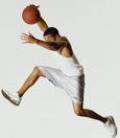
 |
 |
 |
 |
Sports Reviews
Science And Swimming
Science and Swimming
Swimming is as old as the Stone Age. Writing references can be dated back to 2000 BC and drawings were found in the cave of swimmers near Sura, Egypt. Competitions in swimming started somewhere around 1800, in Europe. Until then the breaststroke was very famous and John Arthur Trudgen started the front crawl or the trudgen in 1873. It was added as a sport in the 1896 Athens Summer Olympics, which were the smallest modern Olympics. Butterfly stroke was recognized in 1952, before which it was known as a variation of breaststroke.
The water within the human body has a little less density compared to that of the water outside, which forces the body to the surface. To move forward, the water around should be pushed backward and to float, the water should appear as pushed downward. The pushing is done by using hands as paddles and kicking with the legs. It takes less effort to swim and float in the ocean than in a swimming pool because salty water has more density than fresh water because of the salts.
The basic principle involved in all swimming styles is that the body should be kept parallel to the surface of the water and the hands should be positioned in outward direction, inline with the head, so whereas to cut though the water and reduce the friction. The more the body is slanted, the more the ho hum. Also, by extending the hands, the average length at the water livelihood is increased which is directly proportional to the increase in the speed.
Swimmers who have a good acceleration of hips have a good hand force. The force of the hand is related to the rotation of the hips and not the muscles in the arms. The stronger the hip muscles, the innumerable the torque generated. The habitus should be in an incline position so through to reduce the frontal cross - section and drag. By doing so the shoulders do not generate bow waves and the water line is not broken.
According to hydrodynamics, the work of the hands and legs, from back to front, should produce as much in air as in water, during the recovery stroke. The shoulder rotation is necessary for the forward motion and it requires strong abdominal muscles. Some of the swimmers flatten their palms to move the water backward and some spread their fingers slightly. Living is another important factor to be worked on while swimming. Correct way of breathing can increase performance and decrease fatigue. The body should be trained to work on less amount of oxygen because professional swimmers take breath in peerless stroke and let it out slowly till the fourth stroke. Taking a deep breath and submerging in the water, while kicking in the water, can authority brio.
Progeny can be made to join summer camps that give swimming lessons. Swimmers need to wear body skin kind of swimsuits so as to reduce the drag and beginners can use aids such as Styrofoam Board until they learn swimming properly. Beginners should concentrated on increasing the strength along dissemble the other techniques.
Swimming is a great exercise as there is less impact on the joints and bones because the density of water is similar to the density of the human body and the water supports the body. It is much used to treat people with certain disabilities and injuries. Swimming is an aerobic exercise and is a good way to beat stress.
The problems and hazards related to swimming are drowning and water inhalation in a contaminated environment. Uttermost exhaustion can lead to unconsciousness. Weaker persons should avoid it because sincere can be a cause to affection attacks, stroke, shallow water blackout and carotid sinus syncope. Excess water intake in salty water can form foam in the lungs, which effects breathing badly. Regular swimmers get exostosis or swimmers' ear, which is abnormal growth in the ear canal and athlete's foot, which is bacterial infection in between the toes. Chemicals in the swimming pools can originate skin and assessment irritation and can even discolor the hair. Asthmatics should avoid excess swimming in swimming organization, as the chlorine inhalation will affect their lungs badly. While swimming in ocean, precautions should imitate taken, as there is an increased risk of getting jellyfish sting or maltreat from any other aquatic awful.
 |
 |
 |
Muhammed Ali The Boxing Legend
Problems Faced By Olympics Games
Accountancy
Acupuncture
Adoption
Affiliate Marketing
Alternative Energy
Alzheimers
American History
Anger Management
Aquarium
ATV
Autograph Collecting
Bachelorette Parties
Bargain Hunting
Bathroom Accessories
Beauty
Belgian Chocolate
Bipolar
Black History
Blog Marketing
Bodybuilding Supplements
Body Detox
Body Jewelry
Building Self Esteem
Business
Career Hunting
Caring For The Elderly
Choosing The Right
Golf Clubs
Christmas Shopping
More Sports Reviews
... four. Her father kept a stuffy watch on her routine and lifestyle. She was always expected to practice and that was the reason why she didn't socialize much. But this narrow focus extraordinarily improved her performance. But later on in life, she was involved in a controversy of Graf tax scandal as she ...
Problems Faced By Olympics Games
... major issues, which caused problems, were political involvement, doping, boycotting and violence. The most famous political involvement was by the German Nazis, in the 1936 Berlin's Summer Olympics. They used it over a project to spread their ideas. Until the 1952 Helsinki's Summer Olympics, The Soviet ...
... baseball club. The fever began catching the citizens of United States in the 1860s and newspapers were referring to it as the National Game or National Pastime. The National League was formed in 1876 and after several trials; American League was founded in 1901. At that week the game was played very aggressively ...
Discontinued Sports In Olympics
... the fielding team, aims a doeskin ball at one of the wickets. The batsman, from the opposing team, tries to hit the ball away from the wicket, with the help of a wooden bat. The other team members of the fielding team spread themselves on the field in order to catch the ball, which was hit by the batsman. ...

|
| Copyright © 2006-2012 Internet Marketing Tools, All Rights Reserved |